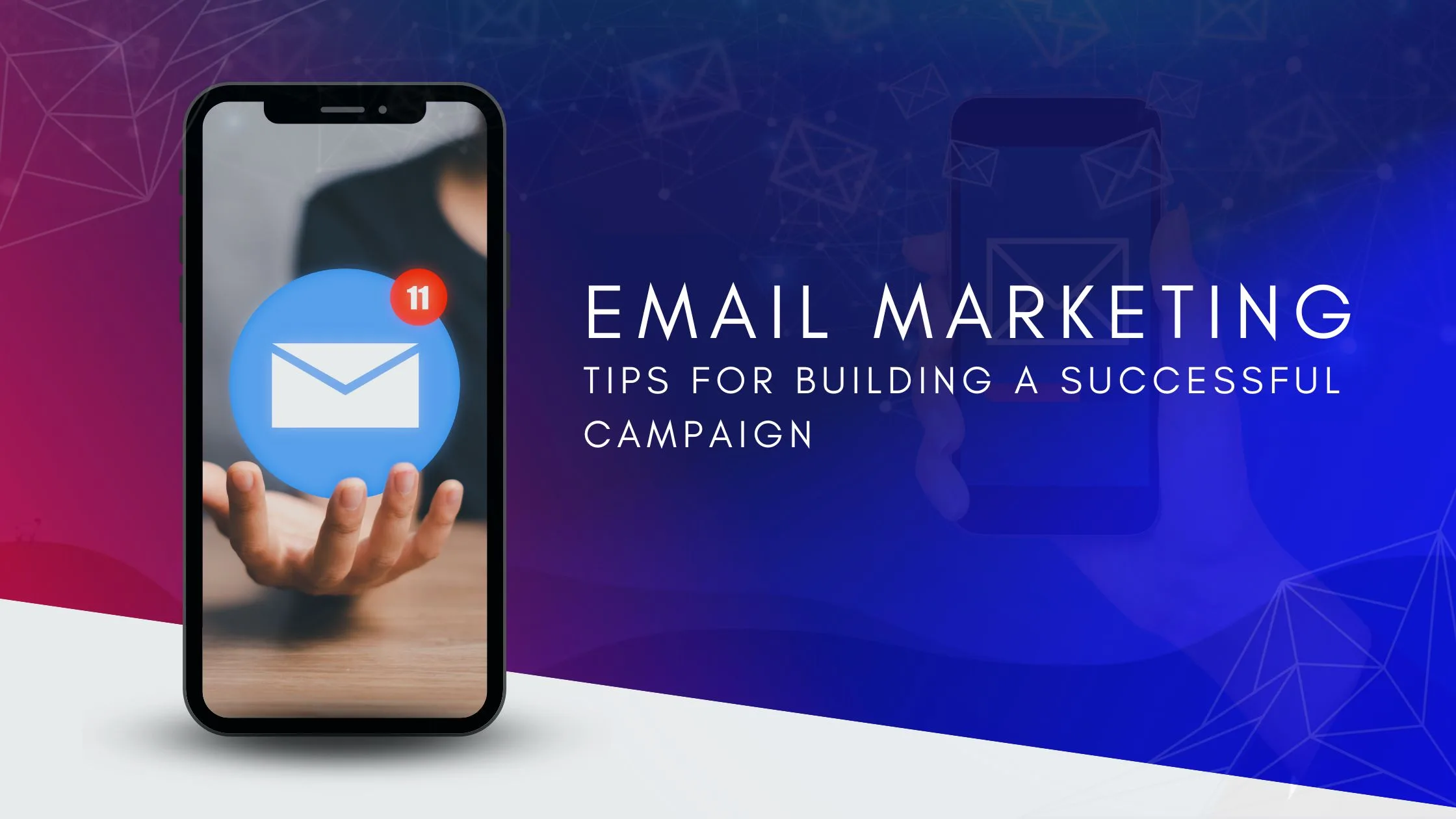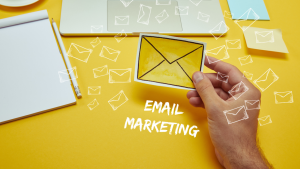Email Marketing: Tips for Building a Successful Campaign
Are you tired of your emails going unnoticed in overflowing inboxes? Do you want to harness the power of email marketing to create a successful campaign that captivates and converts? Look no further! In this blog post, we will equip you with top-notch tips and tricks to help your email marketing soar above the rest. From crafting irresistible subject lines to designing eye-catching templates, get ready to elevate your campaigns and achieve remarkable results. Prepare for an insightful journey as we uncover the secrets behind building a truly triumphant email marketing strategy!
Introduction to Email Marketing
Email marketing is a powerful tool that businesses can use to connect with their target audience and build brand awareness. It involves sending commercial messages, typically in the form of emails, to a group of people who have opted-in or subscribed to receive updates from your company. It is an effective way to reach potential customers, promote products or services, and drive sales.
In this section, we will provide you with an overview of what email marketing is and why it is important for your business. We will also discuss some key benefits of using email marketing and how it can help you build a successful campaign.
Email marketing has been around for decades and remains one of the oldest forms of digital marketing. With the rise of social media platforms and other digital channels, some may argue that email marketing has lost its relevance. However, statistics show that email continues to be one of the most effective ways to reach consumers.
Email marketing involves sending promotional emails or newsletters to a list of subscribers who have expressed interest in receiving updates from your company. These emails can contain various types of content such as product promotions, company news, blog articles, event invitations, and more.
Why Email Marketing is Important for Businesses
Email marketing has become a crucial aspect of businesses’ overall marketing strategy. It is a highly effective tool for reaching out to potential customers, nurturing existing relationships, and ultimately driving sales and revenue. In this section, we will discuss the reasons why email marketing is essential for businesses and how it can benefit them.
1. Cost-effective way to reach targeted audience:
One of the significant advantages of email marketing is its cost-effectiveness. Compared to traditional forms of advertising such as print or television ads, email marketing offers a much more affordable option for businesses to reach their target audience. With minimal costs associated with creating and sending emails, businesses can save on marketing expenses while still being able to reach a large number of people.
2. Builds brand awareness and credibility:
A well-designed email campaign can help create brand awareness among potential customers. By regularly sending out emails that are informative, relevant, and engaging, businesses can establish themselves as industry leaders in the minds of their subscribers. This helps build credibility and trust in their brand, making it more likely for customers to choose their products or services over competitors.
3. Highly customizable and personalized messaging:
Unlike other forms of advertising where messaging may be generic or broad-reaching, email marketing allows for highly personalized communication with subscribers based on their interests and preferences. Businesses can segment their email lists based on various factors like demographics, purchase history, or engagement levels to deliver tailored messages that resonate with each subscriber personally.
Understanding Your Target Audience
In order to build a successful email marketing campaign, it is crucial to have a deep understanding of your target audience. Your target audience is the group of people who are most likely to be interested in your products or services and will potentially become loyal customers.
Here are some key steps to understanding your target audience:
1. Research Demographics: The first step in understanding your target audience is to gather information about their demographics. This includes factors such as age, gender, income level, education level, and geographical location. This data can help you create targeted email campaigns that resonate with the specific characteristics of your audience.
2. Conduct Surveys: Surveys are an effective way to directly gather information from your target audience. You can ask questions about their interests, preferences, challenges, and needs related to your products or services. This will give you valuable insights into what motivates them and how you can tailor your emails accordingly.
3. Analyze Website Analytics: Your website analytics can provide valuable data on the behavior of your visitors. By analyzing metrics such as page views, bounce rates, and time spent on site, you can gain insights into which pages or products are most popular among your target audience.
4. Study Customer Feedback: Take the time to read through customer feedback and reviews on platforms like social media or online review sites. This will give you a better understanding of what resonates with your customers and what improvements they would like to see.
Setting Campaign Goals and Objectives
Creating a successful email marketing campaign starts with setting clear and achievable goals and objectives. These serve as the foundation for your entire campaign, guiding its direction and determining its success. In this section, we will discuss the importance of setting campaign goals and objectives, how to define them effectively, and some key factors to consider when creating your own.
Why Set Goals and Objectives?
Before diving into the specifics of goal setting, it’s important to understand why it is crucial for a successful email marketing campaign. First and foremost, having clearly defined goals helps you stay focused on what you want to achieve. It serves as a roadmap for your campaign, ensuring that all efforts are aligned towards a common purpose.
Additionally, setting specific goals allows you to measure the success of your campaign. Without measurable objectives in place, it’s difficult to determine whether or not your efforts are paying off. By establishing concrete targets, you can easily track progress over time and make necessary adjustments if needed.
Defining Your Goals:
When defining your email marketing goals and objectives, it’s important to keep them SMART – Specific, Measurable, Achievable, Realistic, and Time-bound. Let’s break down each element further:
Specific: Your goals should be clearly stated with no room for interpretation. This means avoiding vague statements such as “increase sales.” Instead, aim for something more specific like “increase sales by 20%.”
Crafting Engaging Subject Lines and Email Content
The subject line is the first thing that your audience will see when they receive your email, making it crucial in grabbing their attention and enticing them to open the email. Therefore, it is essential to craft engaging subject lines that will make recipients want to click and read further.
1. Be Clear and Concise: Your subject line should be short and to the point, summarizing what your email is about in just a few words. Avoid using long or vague subject lines as they can confuse recipients and result in low open rates.
2. Use Personalization: Personalization plays a significant role in making your emails stand out from the rest of the cluttered inbox. Including the recipient’s name or other personalized information can grab their attention and make them more likely to open your email.
3. Create a Sense of Urgency: People are more likely to take action when there is a sense of urgency involved. Using phrases like “limited time offer” or “ending soon” can create a sense of urgency and encourage recipients to open your email before it’s too late.
4. Ask Questions: Asking questions in your subject line can pique readers’ curiosity and entice them to open your email for answers. However, ensure that the question relates directly to the content inside; otherwise, it may come off as clickbait.
Using Personalization and Segmentation Strategies
Personalization and segmentation are two essential strategies in email marketing that can greatly impact the success of a campaign. These tactics allow businesses to tailor their emails to specific recipients, making them more relevant and engaging. In this section, we will discuss the importance of using personalization and segmentation in your email marketing campaign and provide tips on how to effectively implement these strategies.
Why Personalization and Segmentation Matter:
In today’s digital age, consumers are bombarded with countless emails every day. As a result, it has become increasingly challenging for businesses to capture the attention of their target audience through generic mass emails. This is where personalization and segmentation come into play.
Personalization involves tailoring an email’s content based on individual recipient data such as name, location, past purchases, or browsing behavior. On the other hand, segmentation refers to dividing your email list into smaller groups based on specific criteria such as demographics, interests, or engagement levels.
By using personalization and segmentation in your email marketing campaign, you can deliver highly targeted messages that resonate with your audience. This not only increases the chances of your recipients opening and reading your emails but also improves their overall experience with your brand.
Choosing the Right Email Service Provider
Choosing the right email service provider is crucial for building a successful email marketing campaign. With numerous options available in the market, it can be overwhelming to choose the one that best fits your business needs. However, taking the time to research and select the right service provider can make a significant difference in the success of your campaign.
Here are some key factors to consider when choosing an email service provider:
1. Deliverability: One of the most important things to look for in an email service provider is their deliverability rate. This refers to their ability to ensure that emails reach recipients’ inboxes instead of being marked as spam or ending up in junk folders. A high deliverability rate is essential for ensuring that your emails are actually reaching your target audience and increasing the chances of engagement.
2. Features and Tools: Another crucial aspect to consider is what features and tools does the email service provider offer? Look for features such as customizable templates, segmentation options, automation, A/B testing, and integration with other platforms. These tools will help you create more personalized and targeted emails, which can lead to higher open rates and conversions.
3. Scalability: As your business grows, so will your email list. It’s essential to choose an email service provider that can accommodate this growth without any limitations or excessive price increases. Make sure they have plans that fit your current needs but also have room for expansion.
A/B Testing and Analyzing Campaign Results
A/B testing is a crucial component of any successful email marketing campaign. It allows you to compare different versions of your emails and determine which ones are more effective in achieving your desired goals. By analyzing the results of these tests, you can make data-driven decisions to optimize your email campaigns and improve their overall performance.
To begin A/B testing, start by identifying what it is that you want to test. This could be anything from the subject line, email design, call-to-action (CTA), or even the time of day you send out your emails. Once you have identified the variable, create two versions of your email – one with a slight variation from the other.
For example, if you want to test the subject line, create two different subject lines for the same email content. This could be as simple as changing one word or using different language styles (i.e., formal vs. informal). The key is to only change one element at a time so that you can accurately measure its impact on your audience’s behavior.
After sending out both versions to a smaller subset of your subscribers (usually around 10-20% of your list), track and monitor their performance closely. Pay attention to metrics such as open rates, click-through rates (CTR), conversion rates, and unsubscribe rates. These will give you valuable insights into how each version resonated with your audience.
Best Practices for Building a Successful Campaign
Email marketing is a powerful tool for businesses to connect with their audience and drive sales. However, simply sending out mass emails is not enough to ensure a successful campaign. In order to truly make an impact, it’s important to follow certain best practices that will help you build a successful email marketing campaign. Here are some key tips and strategies that can help you achieve your goals:
1. Define Your Target Audience: Before you even start crafting your email campaign, it’s important to have a clear understanding of who your target audience is. This will allow you to tailor your messaging and content specifically for them, making your emails more relevant and effective.
2. Set Clear Goals: Whether it’s increasing website traffic, promoting a new product or service, or driving sales, having clear goals in mind will help guide the direction of your email campaign. This will also allow you to measure the success of your efforts and make necessary adjustments.
3. Craft Compelling Subject Lines: The subject line is often the first thing that recipients see when they receive an email from you. It’s crucial to grab their attention and entice them to open the email with a compelling subject line that accurately reflects the content inside.
4. Personalize Your Emails: Personalization goes a long way in building a connection with your audience. Use their names in the subject line or throughout the email and segment your list based on factors such as demographics or past interactions with your brand.
Common Mistakes to Avoid in Email Marketing
Email marketing can be a powerful tool for businesses to reach their target audience and promote their products or services. However, it is important to remember that there are certain mistakes that can hinder the success of your email campaign. In this section, we will discuss some common mistakes to avoid in email marketing:
1. Neglecting mobile optimization:
With the increasing use of smartphones and tablets, it is crucial for businesses to optimize their emails for mobile devices. Failure to do so can result in a poor user experience and lower open rates. Make sure your emails are responsive and easily accessible on all devices.
2. Using generic subject lines:
The subject line is often the first thing that recipients see when they receive an email. If your subject line is generic or uninteresting, chances are it will be ignored or sent straight to the spam folder. Be creative and make your subject lines compelling enough to entice readers to open your emails.
3. Overwhelming subscribers with too many emails:
Sending frequent emails may seem like a good idea to keep your brand on top of mind, but bombarding subscribers with too many emails can backfire. It may annoy them and lead them to unsubscribe from your mailing list altogether. Find a balance between staying in touch with subscribers without overwhelming them.
Conclusion:
In today’s digital age, it is no secret that email marketing plays a crucial role in the success of any business or organization. With the power to reach a large audience at a relatively low cost, it has become one of the most effective and popular methods of marketing. From small businesses to large corporations, everyone is taking advantage of this powerful tool to promote their products, services, and brand.
The success of email marketing lies in its ability to connect with customers on a personal level. Unlike other forms of advertising such as television commercials or billboards, email allows for direct communication between businesses and their target audience. This personalized approach can lead to higher engagement rates and conversion rates compared to traditional marketing methods.





